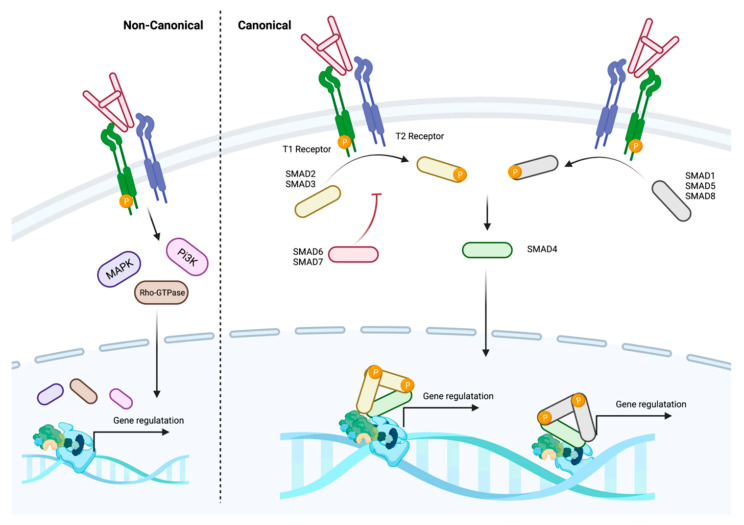Figure 3.
Overview of core TGFB signalling. In the canonical pathway, active TGFB binds to preformed dimers of type-1 (TGFBR1) and type-2 (TGFBR2) receptors to form a heterotetrametric active receptor complex. The constitutively active type-2 receptor activates type-1 receptor kinase activity, allowing recruitment and phosphorylation of R-SMADs and the formation of complexes with SMAD4. These SMAD4 complexes translocate to the nucleus and regulate gene expression in combination with transcription factors, histone-modifying enzymes, and chromatin remodelling complexes. TGFB receptor activation can also trigger non-SMAD-mediated signalling (non-canonical) including activation of MAPK, PI3K, or Rho GTPases. Figure generated using Biorender.com (accessed 28 February 2022).

